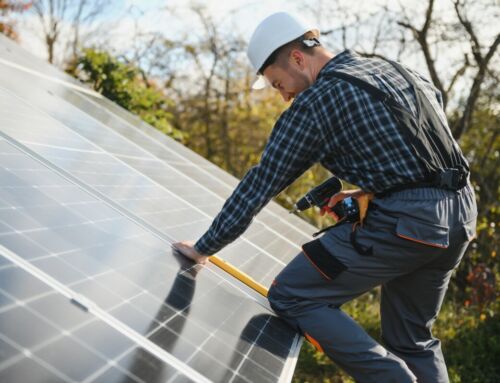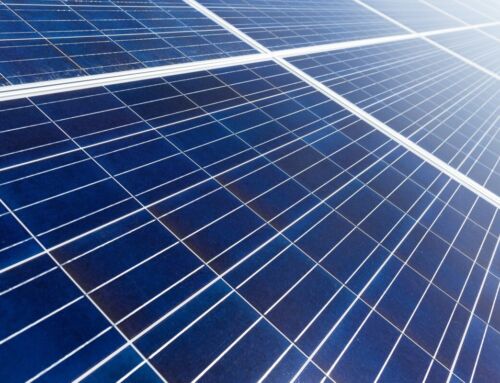The global interest and willingness to invest in renewable energy sources has brought solar power to the forefront of sustainable energy solutions. Solar energy presents a viable and eco-friendly alternative as we look to decrease our reliance on fossil fuels and reduce carbon emissions. Understanding the intricacies of annual solar energy production is crucial for both potential adopters and industry stakeholders. This article delves into the factors affecting solar energy production, the technology behind solar panels, and how platforms like NewSolarQuotes.com facilitate the adoption of solar energy.
Understanding Annual Solar Energy Production
Annual solar energy production refers to the total amount of electricity generated through a solar power system over the course of a year. Various factors influence this production, including geographic location, panel orientation, weather conditions, and system efficiency.
Geographic Location
The geographic location of a solar power system significantly impacts its annual energy production. Areas closer to the equator usually receive more direct sunlight throughout the year, which results in higher energy yields. Conversely, regions with higher latitudes experience reduced solar irradiance, particularly during winter months. For instance, solar panels in California will typically produce more electricity annually compared to those in Alaska due to the difference in solar insolation levels.
Panel Orientation and Tilt
Solar panels’ orientation and tilt angle also play a critical role in maximizing energy production. Solar panels should ideally be angled towards the south to capture maximum sunlight. The tilt angle should be adjusted and modified timely according to the latitude of the installation site to ensure optimal solar exposure throughout the year.
Weather Conditions
Weather patterns, including cloud cover, rain, and snow, can affect the efficiency of solar panels. Regions with frequent cloudy or rainy days may experience lower annual solar energy production compared to areas with predominantly clear skies. However, advancements in solar technology are improving the efficiency of panels even under diffuse light conditions.
System Efficiency
The efficiency of the solar power system itself is another determinant of annual energy production. Modern solar panels typically have efficiency rates between 15% and 22%. Higher-efficiency panels convert more sunlight into electricity, thereby increasing the total energy output of the system. Additionally, the quality of the inverter, which converts the generated D.C. electricity into usable A.C. electricity, also affects system performance.
Solar Panels in Energy Production
Solar panels are the cornerstone of solar power systems. These panels consist of photovoltaic (P.V.) cells that convert sunlight into electrical energy. When sunlight strikes the P.V. cells, it excites electrons, creating an electric current. An inverter converts this direct current (D.C.) into alternating current (A.C.), making it suitable for household or commercial use.
Types of Solar Panels
Three types of solar panels are usually used in residential and commercial installations:
- Monocrystalline Solar Panels: Known to be highly efficient and longevity, monocrystalline panels are made from a single crystal structure. They are typically more expensive but will offer superior performance, especially in limited-space installations.
- Polycrystalline Solar Panels: These panels consist of multiple silicon crystals and are usually less efficient than monocrystalline panels. But on the other hand, they are more affordable and still provide a decently reliable source of solar power.
- Thin-Film Solar Panels: These panels are produced through the placing of thin layers of photovoltaic material onto a substrate. They are lightweight and flexible but typically offer lower efficiency compared to crystalline panels. Thin-film panels are normally used in large-scale installations where space constraints are less of a concern.
Maximizing Annual Solar Energy Production
To maximize annual solar energy production, several strategies can be employed:
Regular Maintenance
Regular maintenance of solar panels ensures they operate at peak efficiency. This includes the regular cleaning of panels to remove dust and debris that could block the sunlight. Additionally, inspecting for any damage or wear and tear helps in early detection and resolution of issues that might affect performance.
System Monitoring
Utilizing monitoring systems allows for real-time tracking of energy production. These systems provide insights into the performance of each panel, identifying underperforming units that may need attention. By monitoring the system, owners can make informed decisions to optimize energy production.
Upgrading Technology
As solar technology advances, upgrading to more efficient panels or inverters can significantly boost energy output. Investing in high-efficiency solar panels or hybrid inverters with advanced features can enhance the overall performance of the solar power system.
NewSolarQuotes.com: Facilitating Solar Energy Adoption
At NewSolarQuotes.com, we are dedicated to helping customers transition to solar power seamlessly. Our platform connects users with top-rated solar panel providers, offering competitive quotes and personalized recommendations. Whether you’re looking to install solar panels for your home or business, NewSolarQuotes.com simplifies the process, ensuring you get the best value for your investment.
We realize the importance of making properly planned and informed decisions when it comes to solar energy. That’s why our website provides comprehensive resources and guides on various aspects of solar power, from understanding annual solar energy production to selecting the right type of solar panels. By working with our network of partners and other resources like FreeSolarPowerQuotes.com, we ensure that our customers receive high-quality products and exceptional service.
The Environmental Impact of Solar Power
Adopting solar power reduces electricity bills and has a profound positive impact on the environment. Solar energy is a clean and perpetual resource, unlike fossil fuels, which emit harmful greenhouse gases. We can drastically reduce carbon emissions from our properties and fight against climate change by generating electricity from sunlight.
Reduction in Greenhouse Gas Emissions
Solar power systems produce zero emissions during operation, making them a realistic environmentally friendly alternative to conventional energy sources. By switching to solar energy, property owners can reduce the overall greenhouse gas emissions driving global warming.
Conservation of Natural Resources
Fossil fuel extraction and consumption deplete natural resources such as coal, oil, and natural gas. In contrast, solar energy relies on the abundant and inexhaustible resource of sunlight. Utilizing solar power helps in conserving these finite resources for future generations.
Economic Benefits of Solar Energy
Investing in solar power offers several economic benefits for individual consumers and the broader economy.
Energy Cost Savings
One of the most influencial advantages of solar energy is the possibility of substantial savings on electricity bills. By generating electricity on their own, homes and businesses can reduce or even get rid of their reliance on grid power, leading to long-term financial savings.
Job Creation
The solar industry has been a major contributor to job creation, with employment opportunities ranging from manufacturing and installation to sales and maintenance. As the interest and demand for solar energy continues to grow, so does the potential for job growth in this sector.
Conclusion
Annual solar energy production is a critical metric for evaluating the efficiency and effectiveness of solar power systems. Solar energy users can make the most of their investment by understanding the factors that influence energy output and employing strategies to maximize production. Platforms like NewSolarQuotes.com play a vital role in facilitating the adoption and use of solar power by providing valuable resources and connecting customers with top-tier solar panel providers.
Switching to solar energy is a financially viable and profitable decision and a step towards a more sustainable and environmentally friendly future. As modern technology continues to develop, the potential for solar energy to meet our energy needs becomes increasingly promising.





